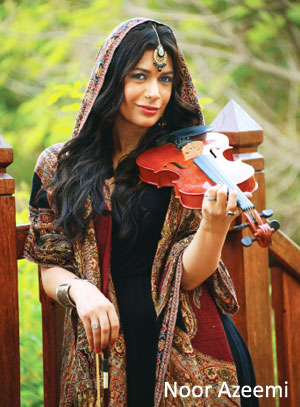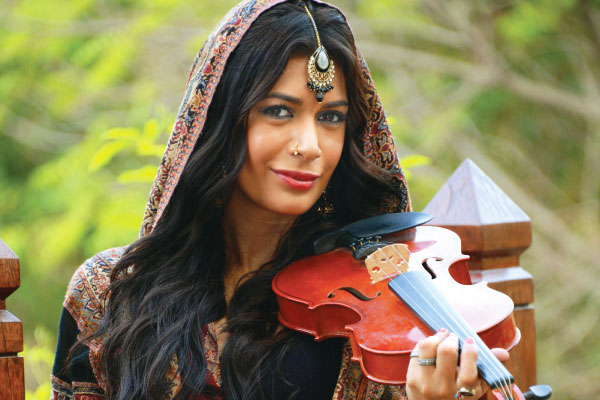Bahrain’s first music therapist, Noor Azeemi, has brought to our shores the healing powers of music. The vibrant young Bahraini explains how music became her life’s mission.
It’s difficult to categorise this Bahraini musician. Noor Azeemi is the first Bahraini to formally train in Indian Carnatic music and Bharatnatyam before channelling her talents towards healing. The 27-year-old is back from the Sixth World Conference on Music Therapy in Delhi, where she presented a paper on the origin of music, using references from Arab culture. She tells us that since her childhood, her life has always had a soundtrack.
Woman This Month (WTM): Is music therapy a new fad in the realm of wellness?
Noor Azeemi (NA): Music therapy was practised centuries ago, but only recently has it come to light as a holistic means of healing. Ancient healing techniques used meditative instruments from Asia. These days, we use technological sounds and beats, depending on a person’s requirements. Music takes people into a meditative and relaxed state, curing stress and insomnia. But the experience is unique to every individual.
WTM: To what extent can it cure disease and disorders?
 NA: Sounds exist everywhere in nature. When harmonious they’re called music; otherwise it’s noise. The source of all disorders is the inner subtle body. When this body is in tune, less physical illness manifests. Children with autism gain confidence and communicate better through music therapy. Even people with physical disabilities perform better when music is used in physiotherapy. Music helps newly born babies relax and sleep better.
NA: Sounds exist everywhere in nature. When harmonious they’re called music; otherwise it’s noise. The source of all disorders is the inner subtle body. When this body is in tune, less physical illness manifests. Children with autism gain confidence and communicate better through music therapy. Even people with physical disabilities perform better when music is used in physiotherapy. Music helps newly born babies relax and sleep better.
WTM: How long did it take you to venture on this path?
NA: I’ve always been interested in music and the emotions it evoked in me. At 21, I picked up the violin. After two years of training in western classical music, I was drawn towards Oriental music. My first guru introduced me to the school of Carnatic music. I’m studying vocal music and the violin at Indian Institute of Performing Arts (IIPA).
WTM: When did you take the leap into therapy?
NA: Around 18 months ago, when I got certified as a therapist from the Nada Institute for Music Therapy, India.
WTM: How do you use music in your work with clients?
NA: I use meditative instruments collected from Tibet, China and India. Clients improvise and express themselves through singing, chanting or playing some instruments. There are two ways of sharing an experience: ahata and anahata. Ahata are external sounds which most people encounter. Anahata refers to the inner sound that not everyone experiences, except for musicians and artists. There’s music inside of us, the inner subtle sound that gets expressed in improvisation and singing, when you’re inspired. That’s how musicians and composers write music.
WTM: What challenges do you face in your work?
NA: I find it sad that people have separated from nature and become immersed in technology. Many believe that music is against religion. They don’t realise that there’s much more to music than entertainment. Higher music can actually help open the chakras and contribute to spiritual enlightenment.


































